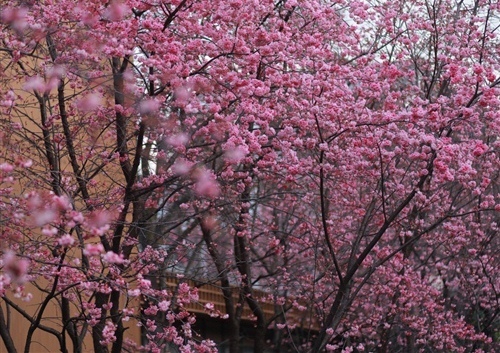
简爱读后感200字左右
Jane Eyre, is a poor but aspiring, small in body but huge in soul, obscure but self-respecting girl. After we close the covers of the book, after having a long journey of the spirit, Jane Eyre, a marvelous figure, has left us so much to recall and to think:We remember her goodness: for someone who lost arms and blinded in eyes, for someone who despised her for her ordinariness, and even for someone who had hurt her deeply in the past.We remember her pursuit of justice. It’s like a companion with the goodness. But still, a virtuous person should promote the goodness on one side and must check the badness on the other side.We remember her self-respect and the clear situation on equality. In her opinion, everyone is the same at the God’s feet. Though there are differences in status、in property and also in appearance, but all the human being are equal in personality.We also remember her striving for life, her toughness and her confidence…When we think of this girl, what she gave us was not a pretty face or a transcendent temperament that make us admire deeply, but a huge charm of her personality.An Analysis of Jane EyreThe novel is rich in poetry, symbolism and metaphor. It does not fit easily into a definite pattern, being neither a novel of manners in the tradition of Austen, or a straightforward Gothic Romance in the style of Mrs Radcliffe. What Charlotte Bronte did was to create a work which cleverly blends elements of the two styles, and which remains uniquely independent of them at the same time, since it addresses issues which were at the time rather controversial.The novel is written in the first person, and thus magnifies the central character - the reader enters the world of Jane Eyre and is transported through her experiences at first hand. This at once makes the work subjective, especially since we know that Charlottes Brontes own life and experiences were so closely interwoven with the heroine's. As well as this we learn only at the end of the novel that the events are being related to us ten years after the reconciliation with Rochester - thus the narrative is RETROSPECTIVE (looking back). CB is clever in blending the narrative so that at times Jane seems to be speaking as an adult with adult hindsight , while at others she she is in the middle of them, as a child or young woman. The indecision which is a central issue in the book, is heightened by this device. We never know, as readers, whether to be entirely trustful of Janes actions and thoughts, because we are never sure wheher she is speaking impulsively or maturely.This intensifies the readers dilemma as to what is right and wrong in the dramatic relationships which are part of JE's life. Can we believe what the heroine says, or is she deceiving herself? The novel is primarily a love story and a romance where wishes come true but only after trials and suffering. The supernatural has its place, as do dreams, portents and prophesies. The heroine begins poor and lonely and ends up rich and loved; the orphan finds a good family to replace the wicked one; all the basic ingredients of classic romantic fairytale are present.The romantic element is present in two forms in Jane Eyre; the family aspect is dealt with in the Gateshead, Lowood and Moor House episodes, which involve the exchanging of the wicked Reed family for the benevolent Rivers one; and the Love romance is dealt with in the Thornfield and Ferndean episodes. Both aspects are, of course linked and interwoven throughout the novel.There is also a strong element of realism in the novel, which, married to the romantic aspect, enhances the novel's strength.The sense of place is very strong; we are able to experience both exterior and interior settings with startling clarity throughout the story, in a series of vivid deive passages. The central characters are also realistic and their confrontations and sufferings change them in a believable way.Even the unlikely is made plausible, with a unique blend of high drama and perceptive low comedy (the attack on Mason, for instance)The more fantastic romantic aspects; the coincidences; the secrets; the supernatural occurrences, are balanced by the realism, and this is of course a major strength.The Gothic influence cannot be ignored, although CB has refined the technique considerably from the authentic Gothic of the 1790's. In the original genre, the heroine would typically be abducted and threatened with seduction, or worse!. There would be a lover - a respectable, well-bred young man - who would endeavor to rescue the heroine and would succeed after many trial. the seducer would be a brigand Know that I adore Corsairs! and he would lock the girl up in a remote castle.There was little freedom for middle class women during the period of the Gothic novel, and this was still the case in the time of CB. Marriage especially was often a bargain, whereby fortunes were secured by using the female as a pawn. A woman's value largely depended therefore on her sexual purity and she was guarded and secured as a result. Men, on the contrary, were potent and free; lovers and mistresses were common. Ironically the women who provided their services were social outcasts as a result.In Jane Eyre we see elements of the Gothic romance, in that Thornfield Hall and Rochester are described very much in the brigand\\\/castle style BUT Jane Eyre is not abducted by R. On the contrary she chooses to go there of her own free will. AND she is clear in her determination to have Rochester as a husband. Neither is there a gentleman rescuer; St John Rivers may look like a Greek God, but he is neither kind nor benevolent; driving Jane back to Ferndean, not rescuing her from it.The trials which the hero is supposed to undergo in a Gothic romance are in fact undergone by the heroine in Jane Eyre. The bandit Rochester is only skin-deep. Underneath the brooding exterior is a sensitive soul, which a WOMAN frees. In this way we see that CB created rather a daring departure from conventional fiction, although there are still many aspects of the novel which remain true to Victorian convention.!
简爱读后感 200字
《简爱》是英国文学史上的一部经典传世之作,它成功地塑造了英国文学史中第一个对爱情、生活、社会以及宗教都采取了独立自主的积极进取态度和敢于斗争、敢于争取自由平等地位的女性形象。
大凡喜爱外国文学作品的女性,都喜欢读夏洛蒂的《简爱》。
如果我们认为夏洛蒂仅仅只为写这段缠绵的爱情而写《简爱》。
我想,错了。
作者也是一位女性,生活在波动变化着的英国19世纪中叶,那时思想有着一个崭新的开始。
而在《简爱》里渗透最多的也就是这种思想——女性的独立意识。
让我们试想一下,如果简爱的独立,早已被扼杀在寄人篱下的童年生活里;如果她没有那份独立,她早已和有妻女的罗切斯特生活在一起,开始有金钱,有地位的新生活;如果她没有那份纯洁,我们现在手中的《简爱》也不再是令人感动的流泪的经典。
所以,我开始去想,为什么《简爱》让我们感动,爱不释手——就是她独立的性格,令人心动的人格魅力。
然而,我们不禁要问,仅这一步就能独立吗我认为,不会的。
毕竟女性的独立是一个长期的过程,不是一蹴而就的。
它需要一种彻底的勇气,就像简爱当年毅然离开罗切斯特一样,需要“风潇潇兮易水寒,壮土一去兮不复返”的豪迈和胆量。
我想,这应该才是最关键的一步,也应该是走向独立的决定性的一步。
而夏洛蒂笔下的简爱却把她倔强的性格,独立的个性留给我们一个感动。
所以她是成功的,幸福的女性。



